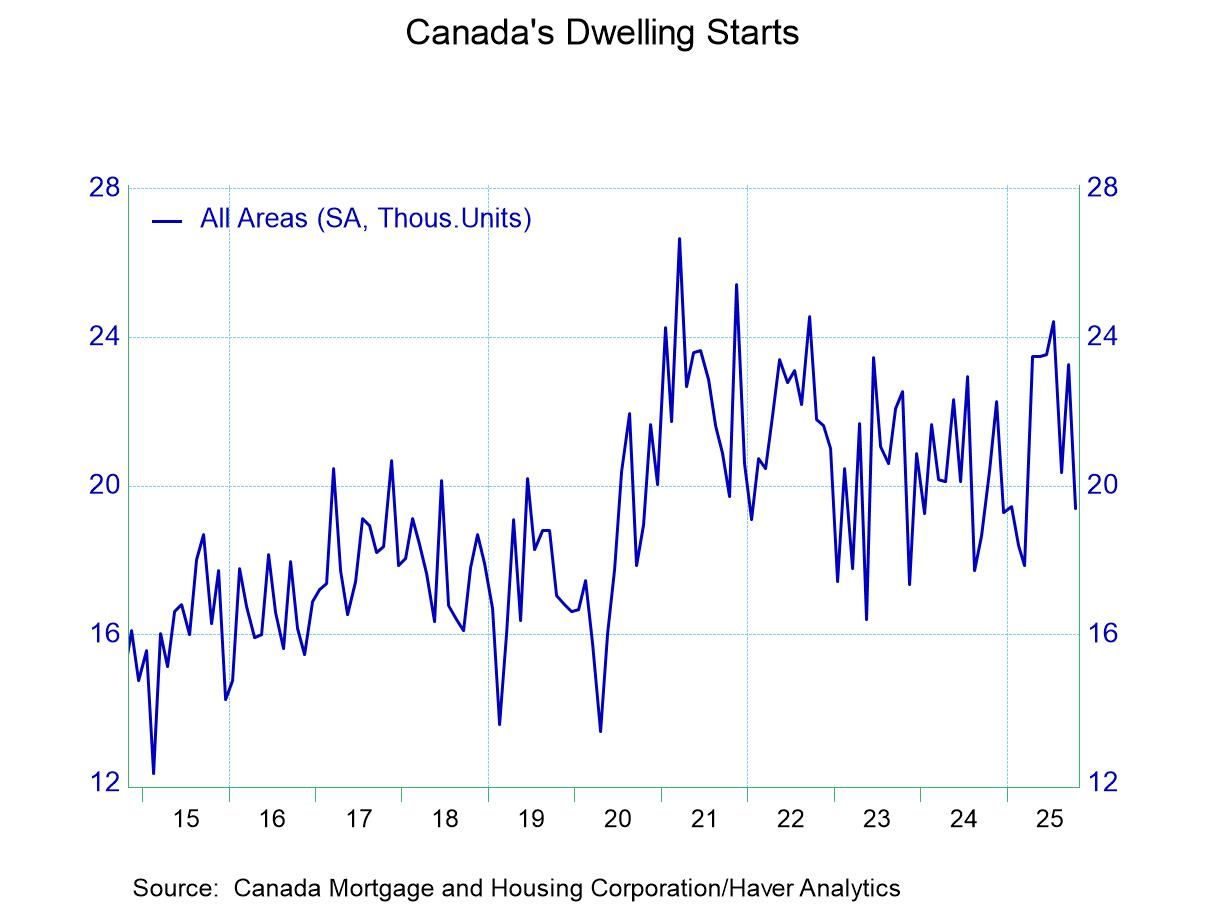 Global| Dec 10 2015
Global| Dec 10 2015U.S. Initial Unemployment Insurance Claims Increase
by:Tom Moeller
|in:Economy in Brief
Summary
Initial claims for unemployment insurance rose to 282,000 (-1.2% y/y) in the week ending December 5 from an unrevised 269,000 the previous week. The Action Economics Forecast Survey expected 265,000 filings. The four-week moving [...]
Initial claims for unemployment insurance rose to 282,000 (-1.2% y/y) in the week ending December 5 from an unrevised 269,000 the previous week. The Action Economics Forecast Survey expected 265,000 filings. The four-week moving average rose slightly to 270,750 but remained near the 15-year low. During the last ten years, there has been a 74% correlation between the level of initial claims and the m/m change in payroll employment.
In the week ending November 28, continuing claims for unemployment insurance edged up to 2.243 million, but were 18.7% lower than a year earlier. The four-week moving average increased to 2.184 million and remained near the 15-year low.
The insured rate of unemployment notched higher to 1.7% but remained near the cycle low.
The insured rate of unemployment across states continued to vary. The lowest were South Dakota (0.4%), Nebraska (0.6%), Florida (0.6%), Indiana (0.7%), Virginia (0.7%) and Tennessee (0.8%). At the other end of the spectrum were California (1.7%), Illinois (1.8%), Massachusetts (1.9%), Connecticut (2.0%), Pennsylvania (2.2%) and New Jersey (2.4%). The state data are not seasonally adjusted and reported with a two-week lag versus the headline figure.
Data on weekly unemployment insurance are contained in Haver's WEEKLY database and they are summarized monthly in USECON. Data for individual states are in REGIONW. The expectations figure is from the Action Economics survey, carried in the AS1REPNA database.
| Unemployment Insurance (000s) | 12/05/15 | 11/28/15 | 11/21/15 | Y/Y % | 2014 | 2013 | 2012 |
|---|---|---|---|---|---|---|---|
| Initial Claims | 282 | 269 | 260 | -1.2 | 307 | 342 | 372 |
| Continuing Claims | -- | 2,243 | 2,161 | -18.7 | 2,607 | 2,978 | 3,308 |
| Insured Unemployment Rate (%) | -- | 1.7 | 1.6 |
1.8 |
2.0 | 2.3 | 2.6 |
by Tom Moeller December 10, 2015
Import prices declined 0.4% during November following a 0.3% October drop, revised from -0.5%. A 0.7% fall had been expected in the Action Economics Forecast Survey. Petroleum prices fell 2.5% (-44.5% y/y) after a 0.4% rise, revised from a 2.1% decline. Nonpetroleum import prices fell 0.3% (-3.4% y/y) after an unrevised 0.4% decline. These prices have not risen m/m since March of last year. A 1.0% decline (-11.2% y/y) in prices of nonoil supplies & materials led the way lower followed by a 0.5% drop (-5.0% y/y) in food & beverage costs. Capital goods prices eased 0.1% (-2.3% y/y) as did prices for automotive vehicles & sparts. Nonauto consumer goods prices remained unchanged (-0.7% y/y) for a second straight month.
Export prices fell 0.6% (-6.3% y/y) following an unrevised 0.2% decline. Expectations had been for a 0.2% shortfall. A 1.6% decline (-15.0% y/y) in industrial supplies & materials prices led the way lower. This drop reflected lower fuels & building materials costs, without which prices fell 0.4% (-8.4% y/y). Foods, feeds & beverages prices were off 0.9% (-13.0% y/y) and capital goods costs eased 0.1% (-0.2% y/y). Automotive vehicles & parts prices fell 0.2% (-0.5% y/y), but nonauto consumer goods prices improved 0.1% (-2.1% y/y).
The import and export price series can be found in Haver's USECON database. Detailed figures are available in the USINT database. The expectations figure from the Action Economics Forecast Survey is in the AS1REPNA database.
| Import/Export Prices (NSA, %) | Nov | Oct | Sep | Nov Y/Y | 2014 | 2013 | 2012 |
|---|---|---|---|---|---|---|---|
| Imports - All Commodities | -0.4 | -0.3 | -1.1 | -9.4 | -1.1 | -1.1 | 0.3 |
| Petroleum | -2.5 | 0.4 | -9.4 | -44.5 | -5.6 | -2.6 | -0.3 |
| Nonpetroleum | -0.3 | -0.4 | -0.2 | -3.4 | 0.1 | -0.6 | 0.3 |
| Exports - All Commodities | -0.6 | -0.2 | -0.6 | -6.3 | -0.5 | -0.4 | 0.4 |
| Agricultural | -1.1 | 0.1 | -1.4 | -12.8 | -2.7 | 1.6 | 2.4 |
| Nonagricultural | -0.6 | -0.3 | -0.5 | -5.7 | -0.3 | -0.7 | 0.1 |
Tom Moeller
AuthorMore in Author Profile »Prior to joining Haver Analytics in 2000, Mr. Moeller worked as the Economist at Chancellor Capital Management from 1985 to 1999. There, he developed comprehensive economic forecasts and interpreted economic data for equity and fixed income portfolio managers. Also at Chancellor, Mr. Moeller worked as an equity analyst and was responsible for researching and rating companies in the economically sensitive automobile and housing industries for investment in Chancellor’s equity portfolio. Prior to joining Chancellor, Mr. Moeller was an Economist at Citibank from 1979 to 1984. He also analyzed pricing behavior in the metals industry for the Council on Wage and Price Stability in Washington, D.C. In 1999, Mr. Moeller received the award for most accurate forecast from the Forecasters' Club of New York. From 1990 to 1992 he was President of the New York Association for Business Economists. Mr. Moeller earned an M.B.A. in Finance from Fordham University, where he graduated in 1987. He holds a Bachelor of Arts in Economics from George Washington University.






